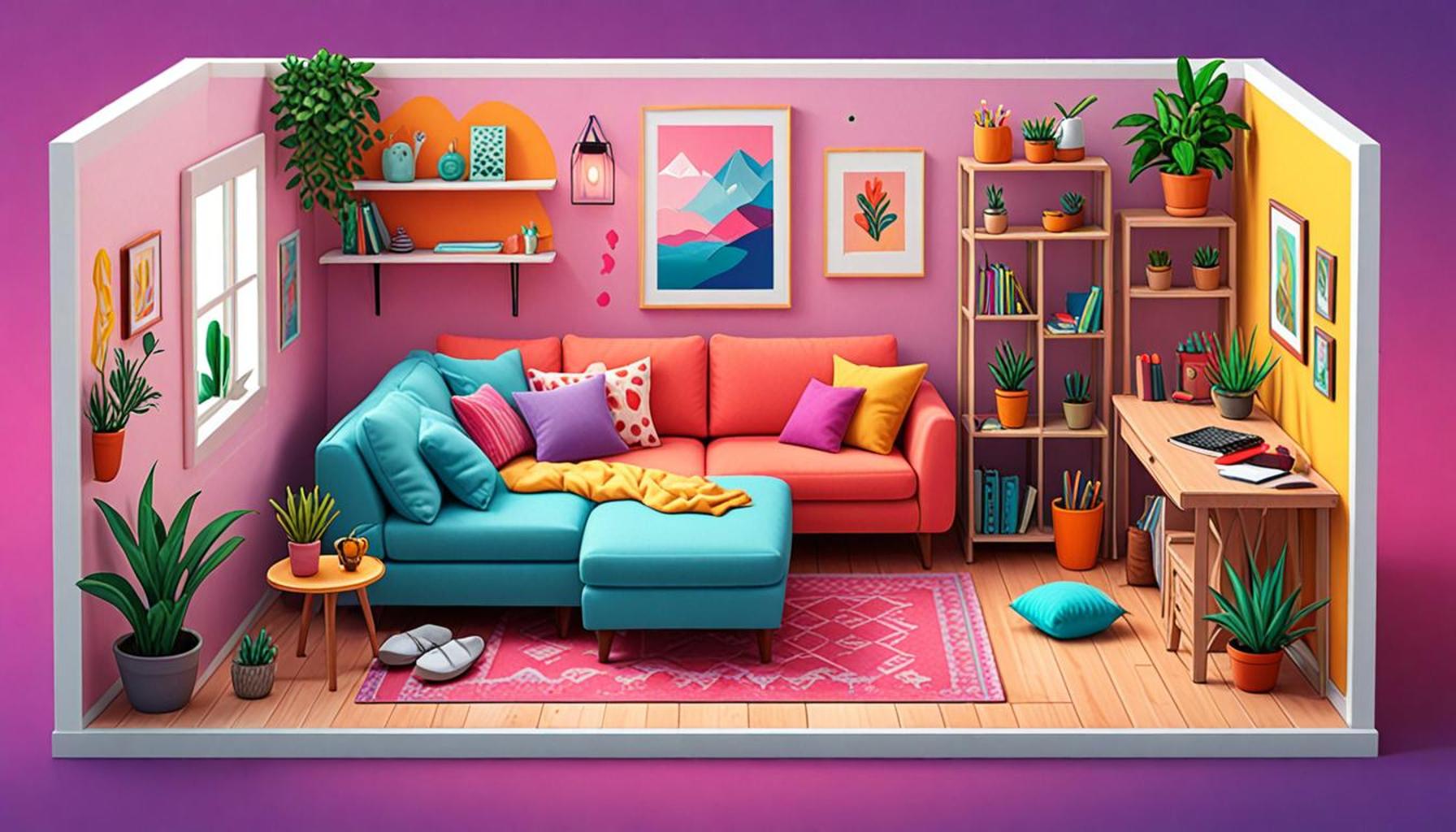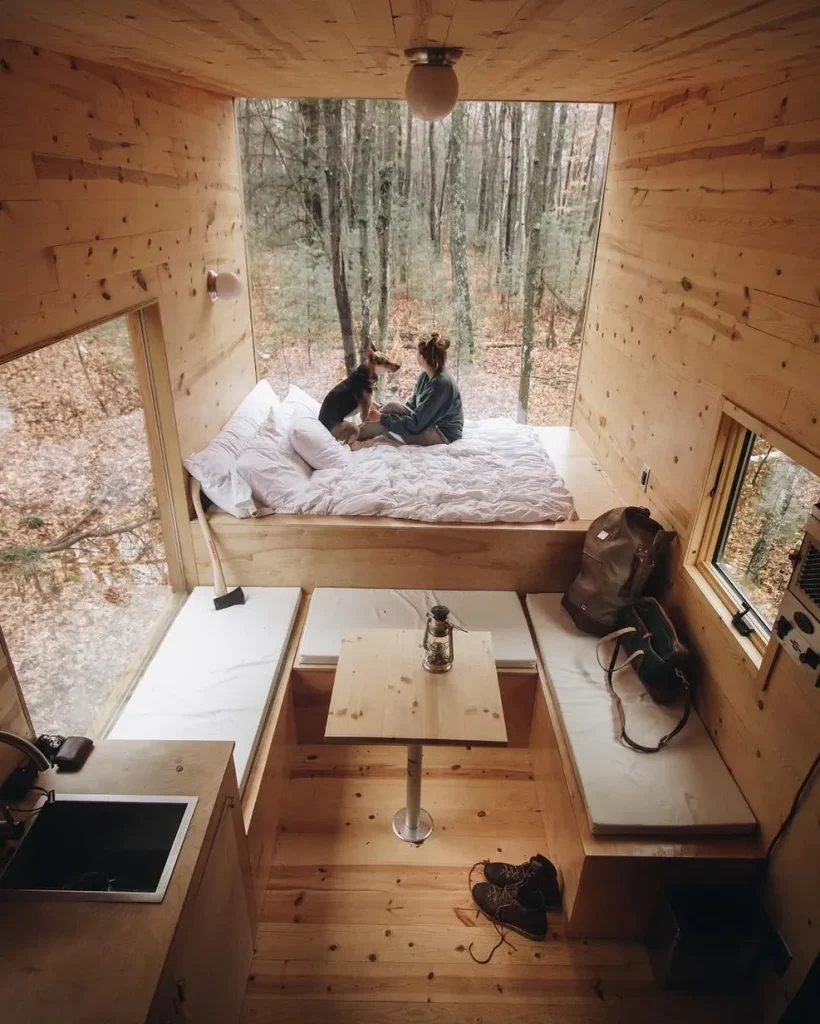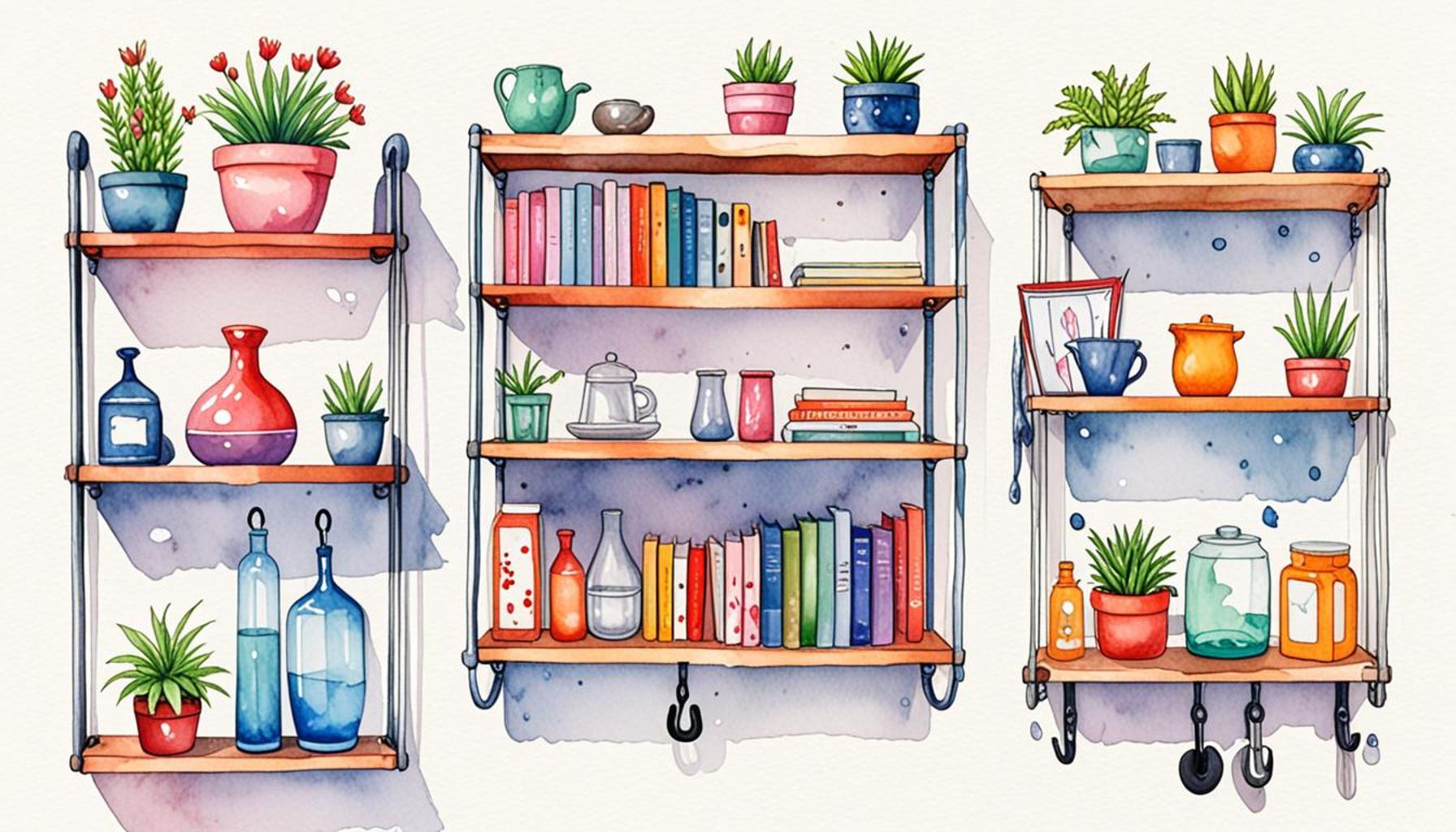Creating Comfort Zones: How to Efficiently Divide Small Spaces

Understanding the Dynamics of Small Space Living
In an era where urbanization is at its peak, the prevalence of small spaces in city life is an undeniable reality. With skyrocketing housing prices and the increasing density of metropolitan areas, many individuals and families find themselves residing in compact apartments or even tiny homes. Thus, the ability to transform these limited spaces into functional and cozy environments is not just a desirable skill; it is a necessity.
The Importance of Space Division
When it comes to maximizing the utility of small areas, efficiently dividing these spaces plays a crucial role. This division can lead to significant enhancements in several key areas:
- Enhanced Privacy: In environments with multiple occupants, maintaining personal space is vital. Effective separation—whether through the use of curtains, bookshelves, or folding screens—can foster a sense of seclusion, allowing individuals to unwind comfortably without distractions.
- Improved Organization: By designating specific areas for distinct purposes, one can reduce clutter and create a more organized living space. For example, a small room can be partitioned into a work area and a relaxation corner, ensuring that items related to each function remain within their respective zones.
- Increased Aesthetic Appeal: A well-organized room with clearly defined zones can elevate the overall look of the space. Using different colors or textures for each area can visually separate them, making the environment more appealing to the eye.
Strategies for Creating Comfort Zones
Adapting to confined living conditions requires creativity and innovation. Here are a few strategies that can significantly contribute to crafting a more inviting atmosphere in small spaces:
- Furniture Placement: Arranging furniture strategically can create barriers and delineate separate spaces without actual walls. For instance, a couch can act as a divider between a living area and a workspace, allowing for an open yet defined environment.
- Color Schemes: Using colors that complement each other throughout various sections can provide a cohesive look. Light colors tend to make spaces feel larger, while darker hues can create intimate zones.
- Decorative Dividers: Utilizing open shelving or decorative panels can divide areas while still keeping them connected. These dividers can serve functional purposes, such as storing books or displaying artwork, enhancing both practicality and design.
The journey towards maximizing small spaces is certainly a worthwhile endeavor. With an understanding of space dynamics and a willingness to experiment with layout and decor, even the most compact living environments can be transformed into stylish, functional homes. As we navigate through these transformative strategies, you will find that every square foot can be optimized, allowing for a harmonious blend of relaxation and productivity.
DISCOVER MORE: Click here for insightful tips

Maximizing Functionality in Compact Areas
As urban living continues to rise, the challenge of efficiently dividing small spaces becomes more relevant than ever. With many city dwellers limited to one-room apartments or studio layouts, making the most of available square footage is essential. By employing various techniques to effectively divide these areas, individuals can create personalized zones that serve specific functions, ultimately enhancing both livability and comfort.
Identifying Zones of Activity
Before diving into the practicalities of division, it’s crucial to identify the distinct activities that will occur within the space. Each functional area will play a pivotal role in shaping how the room feels and operates. Here are some common zones to consider:
- Living Area: This is often the central spot for relaxation and socializing. It’s important to create a welcoming atmosphere that encourages unwinding after a long day.
- Workstation: With remote work becoming commonplace, setting up a dedicated area for productivity is vital. This should be free from distractions and conducive to focus.
- Resting Zone: A space for sleep or quiet reflection contributes to overall well-being. In a small bedroom, this might also double as a cozy reading nook.
- Dining Space: Finding room for meals is crucial, whether it be a small breakfast bar or a foldable dining table that can be tucked away when not in use.
Once these zones are identified, you can begin to think creatively about how to separate them within the constraints of your small space. The techniques listed below can help streamline this process and contribute to an overall cohesive design.
Innovative Techniques for Space Division
By using innovative techniques for creating comfort zones, one can take advantage of each designated area without feeling crowded. Consider the following strategies:
- Multi-functional Furniture: Opt for furniture pieces that serve multiple purposes, such as a sofa bed or an ottoman with storage. These items allow for functional versatility while keeping the space uncluttered.
- Rugs and Textiles: Area rugs can visually distinguish separate zones within a larger room. By placing a rug under the dining table or work desk, you signify the purpose of that area and enhance its aesthetic appeal.
- Vertical Space Utilization: Take advantage of walls for shelving or hooks. By going vertical, you can free up floor space and maintain an airy feel in the environment.
- Light and Airflow Management: Use curtains or screens that allow light to filter in while maintaining some division. This keeps spaces bright and inviting without feeling enclosed.
In summary, understanding how to effectively divide small spaces can foster greater functionality, organization, and comfort. The key lies in identifying use-specific zones and then applying creative solutions that cater to those needs. As we move forward, we will explore more detailed examples and creative ideas to enhance the comfort zones of your small living areas.
Effective Strategies for Dividing Small Spaces
Creating comfort zones in small spaces often requires innovative solutions that maximize the utility of every square foot. One effective strategy is to use multifunctional furniture. For instance, a sofa bed not only serves as a seating area but also provides an additional sleeping space for guests, making it an ideal piece for studio apartments.
Another effective method for dividing spaces is through the use of room dividers. These can be anything from sliding screens to open shelving, which provide a physical boundary without relinquishing the light and airy feel of the space. These dividers can also serve as decorative elements, enhancing the aesthetic appeal of the room while cleverly creating separate zones for different activities.
Moreover, layering light is essential in small spaces. Utilizing a combination of overhead lights, floor lamps, and table lamps can help delineate areas and create a cozy ambiance. Different lighting colors and intensities not only clarify the purpose of each section but can also significantly influence the overall mood of the environment.
Additionally, incorporating vertical storage solutions allows residents to keep floors free from clutter while making effective use of wall space. Floating shelves or wall-mounted cabinets can hold books or decorative items, contributing to both storage and the visual cohesion of the space.
| Category | Description |
|---|---|
| Multifunctional Furniture | Pieces that serve dual purposes, maximizing functionality and space. |
| Room Dividers | Physical boundaries that enhance privacy while maintaining openness. |
| Layered Lighting | Combining different light sources to define areas and influence mood. |
| Vertical Storage | Utilizing wall space for storage, keeping areas clutter-free. |
Understanding these elements and their functional benefits can transform how we perceive and utilize small living areas. By strategically incorporating these strategies, one can not only enhance the comfort and utility of the space but also cultivate a sense of well-being in these cozy environments.
DIVE DEEPER: Click here to unlock more productivity tips
Incorporating Visual and Physical Dividers
While functionality is key in small spaces, the aesthetic aspect cannot be overlooked. Implementing both visual and physical dividers can help create a sense of separation that contributes to the overall ambiance of a room without sacrificing openness.
Utilizing Screens and Curtains
Free-standing privacy screens and decorative curtains are excellent choices for creating temporary barriers between different areas. These elements can easily be adjusted or moved to suit various needs—offering flexibility that is essential in smaller living environments.
- Screen Styles: Decorative folding screens can serve as a wall replacement and be designed to reflect personal style. From modern geometric patterns to traditional motifs, the right screen can enhance the visual appeal while effectively dividing spaces.
- Curtain Solutions: Installing a ceiling-mounted curtain track allows you to pull curtains across an area to create partitions. This can be especially handy in a studio layout where you want the ability to separate your bed from the living area for added privacy.
Open Shelving as Dividers
Open shelving offers both practicality and an opportunity for creative expression. Instead of traditional closed cabinetry, consider using open shelves to delineate spaces while displaying books, plants, or decorative items.
- Benefits of Open Shelving: This approach provides storage while maintaining a sense of openness. Since the shelves don’t reach the ceiling, they make it easier for light to traverse the room, keeping it bright and welcoming.
- Layered Display: Using a variety of items on the shelves—such as stacked books, artwork, and potted plants—can create visual interest and help tangibly define boundaries between zones.
Plants as Natural Dividers
Incorporating greenery into your design not only beautifies the space but can also serve as an effective natural divider. Tall plants, such as snake plants or fiddle leaf figs, can act as living walls that create a partition between areas without additional clutter.
- Biophilic Design: Studies have shown that introducing plants into your home environment can enhance mood and reduce stress. Therefore, using plants to separate zones contributes both to aesthetics and overall wellness.
- Low Maintenance Options: For those less inclined to manage extensive plant care, choosing low-maintenance varieties can add life to your space with minimal effort.
Color Coordination for Psychological Division
Color can profoundly affect the mood of a room. By strategically using different color palettes within the respective zones, you can create the illusion of separation while maintaining harmony in overall design.
- Color Schemes: Utilize a bold color for the living area while soft neutrals can define the workstation or resting zone. This method fosters an inviting energy in communal spaces while providing calmness in areas aimed at relaxation or focus.
- Accent Walls: Rather than painting the entire room in varied colors, an accent wall can effectively provide distinction. Whether through paint, wallpaper, or decals, this technique reinforces the purpose of each zone without overwhelming the space.
Overall, it is essential to creatively leverage a combination of physical and visual dividers in small spaces. With thoughtful approaches to design, such as open shelving, natural elements, and color coordination, it is possible to construct comfort zones that are both functional and aesthetically pleasing.
DISCOVER MORE: Click here to dive deeper
Conclusion: Crafting Your Ideal Comfort Zone
In the quest for creating comfort zones within small spaces, it is vital to blend functionality with aesthetic appeal to enhance not just the look, but the feel of your environment. By effectively leveraging visual and physical dividers, such as decorative screens, curtains, and open shelving, you can establish designated areas that promote both comfort and productivity. The incorporation of plants as natural dividers not only adds vibrancy but also contributes to a healthier living atmosphere, reinforcing the principles of biophilic design.
Moreover, the strategic use of color can play a significant role in establishing psychological boundaries within a room. By carefully selecting distinct color palettes for different zones, you create an inviting and harmonious flow that encourages relaxation or focus, depending on the need. Ultimately, the goal is to craft spaces that are not only livable but also tailored to your personal taste and lifestyle.
As you embark on your journey to create the perfect comfort zone, remember that the essence of good design lies in flexibility and creativity. Experiment with various combinations of physical and visual elements, keeping in mind that even small changes can greatly impact your overall experience of the space. Transforming a compact area into a multi-functional haven is within reach. So, allow your imagination to guide you and embrace the challenges of small space living. You may be surprised at how rewarding and fulfilling it can be to design a cozy sanctuary that invites you to unwind and recharge.


